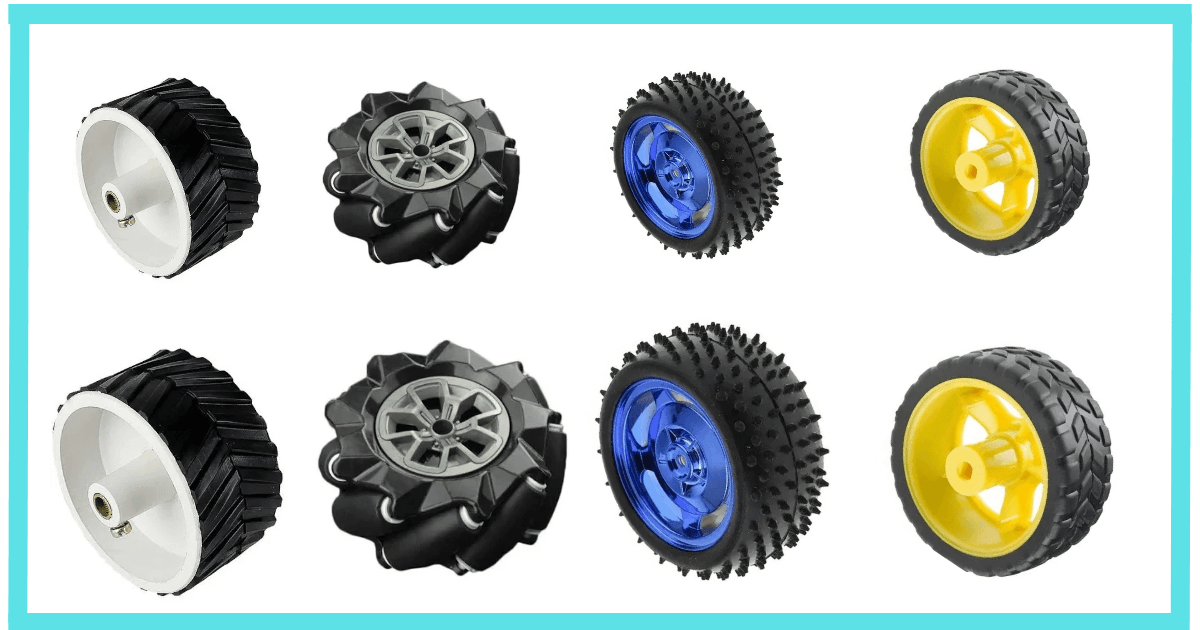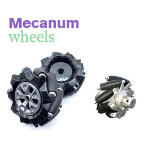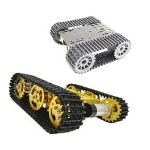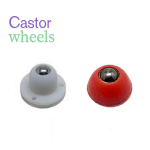
As a robotic enthusiast, Robot wheels are the most common unit we come across in our daily lives. In a moving Robot, robot wheels are very crucial for their movements. They come in different designs, sizes, and mechanisms. In this article, we are trying to cover all of the queries around this fundamental robotic unit.
What is a Robot wheel?
In simple words, Just like a car, bus, or cycle wheel, a round-shaped plastic or metallic body that rotates around its axle to give certain motion to a physical body bound over it. In the case of robot wheel, it is less bulky and easy to install, sometimes it also carries a rubber tyre around the rim.

Types of robot wheels:
Robot wheels usually come in different sizes. Based on the revolving mechanism there are few major types of wheels:
Single direction wheels:
A wheel that rotates perpendicular to the motor, provides back-and-forth motion to a robot’s chassis. In this type of arrangement robot can move bi directional just like a car. These are the basic wheels similar to any cart or vehicle’s wheel.
Omnidirectional wheels.
As the name suggests a wheel that makes the robot move in any direction at any time is called an omni wheel. There are several rollers mounted on the surface of the wheel, which enables the robot to slide on a different axis.
Mecanum Robot wheels:

The mecanum wheels are also Omnidirectional wheels but it is quite different from Omni wheels. They are usually fitted at a robotic caterpillar at a 45-degree angle. With different combinations of back and forth movement of these wheels robots can take the Omnidirectional path. Due to its unique design, it takes precise space to change direction, They are used in industrial robots where space is a crucial parameter.
Caterpillar wheels:

In this type of arrangement, a belt with tracks engraved over it rotates around the wheels just similar to war tanks. One or multiple rotating mechanisms are involved in driving a track belt, which eventually gives motion to a robot. This type of wheel setup is used for robots working effectively in uneven terrain, sand, or ice surfaces. In this type of arrangement, the weight of the entire robot is distributed uniformly over the whole belt due to which the Robot moves easily.
Ball shape wheels:
These are unconventional kinds of wheels in the shape of a sphere. It can rotate in any direction upon requirement. Educational and prototype robots use such types of wheels.
Caster wheels:

These are the Omnidirectional wheels designed to support Robot movement. In this type of wheel configuration, A metallic ball is trapped inside a metal or plastic frame, and such a frame is mounted over the caterpillar of a robot. These are the secondary wheels, allowing robots to slide in any direction along with propulsion. With the help of this wheel, the load of the entire robot gets distributed and reduced on the main propeller wheel.
Application of robot wheels:
- Educational and hobbyist robot: From zero to advanced levels of understanding electronics, robotics plays an important role. Since motors and wheels are visible and have a real-life presentation, it is very common to use wheels with such hobbyists or educational robots.
- Industrial Robots and Arm: With ongoing development in industrial robotics, the use of robotic arms has increased to maximize efficiency. In a robotic arm, there are several motors assembled over the configuration to achieve any particular task. These motors use wheels most of the time. Whether it is a servo motor or stepper motor, robotic wheels are assembled over an axle to achieve particular momentum. Apart from this, to provide a moment to any particular assembly, the engineer uses wheels with a robotic arm.
- Autonomous Robot: In the era of technology, where automation is evident everywhere in our lives, Autonomous robots are replacing our manual work and boosting our livelihood quality. From autonomous cars, to house help robots several developments are taking place around us, These robots use different kinds of wheels very evidently. These self-driving robots are capable of going from one place to another place on their own by using robotic wheels.
- Medical robots: In recent years various robotic developments paved the way for medical robots. Fast medical trials, and reducing contact with contagious viruses are the main areas where these autonomous robots are being used, these Moving robots inside a hospital use various wheels for the moment. In addition, remote robotic surgery also uses robot wheels at a larger scale.
- exploration robot: Due to the inability to reach particular places like outer space, under the sea, under the earth’s crust, etc. we use exploration robots. Uneven terrain and ambiguous surroundings can be tackled by using the appropriate type of robotic wheels. In today’s developments, space robots are using caterpillar wheels to explore outer space and planets
Apart from this, robot wheels are being used in almost every field of robotics. In Conclusion, Robotic wheels are an essential part of a robot. It is made with plastic or metal and has mostly disk-type shape. It provides a moment or rotation to a robot. It comes in various sizes and shapes. According to their applicability, they can be classified as single, multi-dimensional, caterpillar type, caster type, etc.
read more:
Robot Cart : Amazing Tool To Transform Industries In 2024.
Germanium Transistor: Loaded with Mesmerizing features for 21st century.
How do drone shows work? It’s Cost and technology behind this wonder.
What is the future of RPA developer? : Robotic Process Automation in 2025
RUST : BEST LANGUAGE FOR ROBOTICS in 2025?

[…] read more: Robot Wheel , Critical part of a robot in 21st century […]
[…] Robot Wheel , Critical part of a robot in 21st century […]
[…] Robot Wheel , Critical part of a robot in 21st century […]
[…] Robot Wheel , Critical part of a robot in 21st century […]
[…] read more – Robot Wheel , Critical part of a robot in 21st century […]
[…] read more about Robot Wheel , Critical part of a robot in 21st century […]
[…] read more about Robot Wheel , Critical part of a robot in 21st century […]
[…] Robot Wheel , Critical part of a robot in 21st century […]
I’m not sure why but this website is loading incredibly slow for me. Is anyone else having this issue or is it a problem on my end? I’ll check back later on and see if the problem still exists.